The Baseline - Investigating Five of Tennis's Biggest Talking Points
Part 1 - The Team Event Landscape
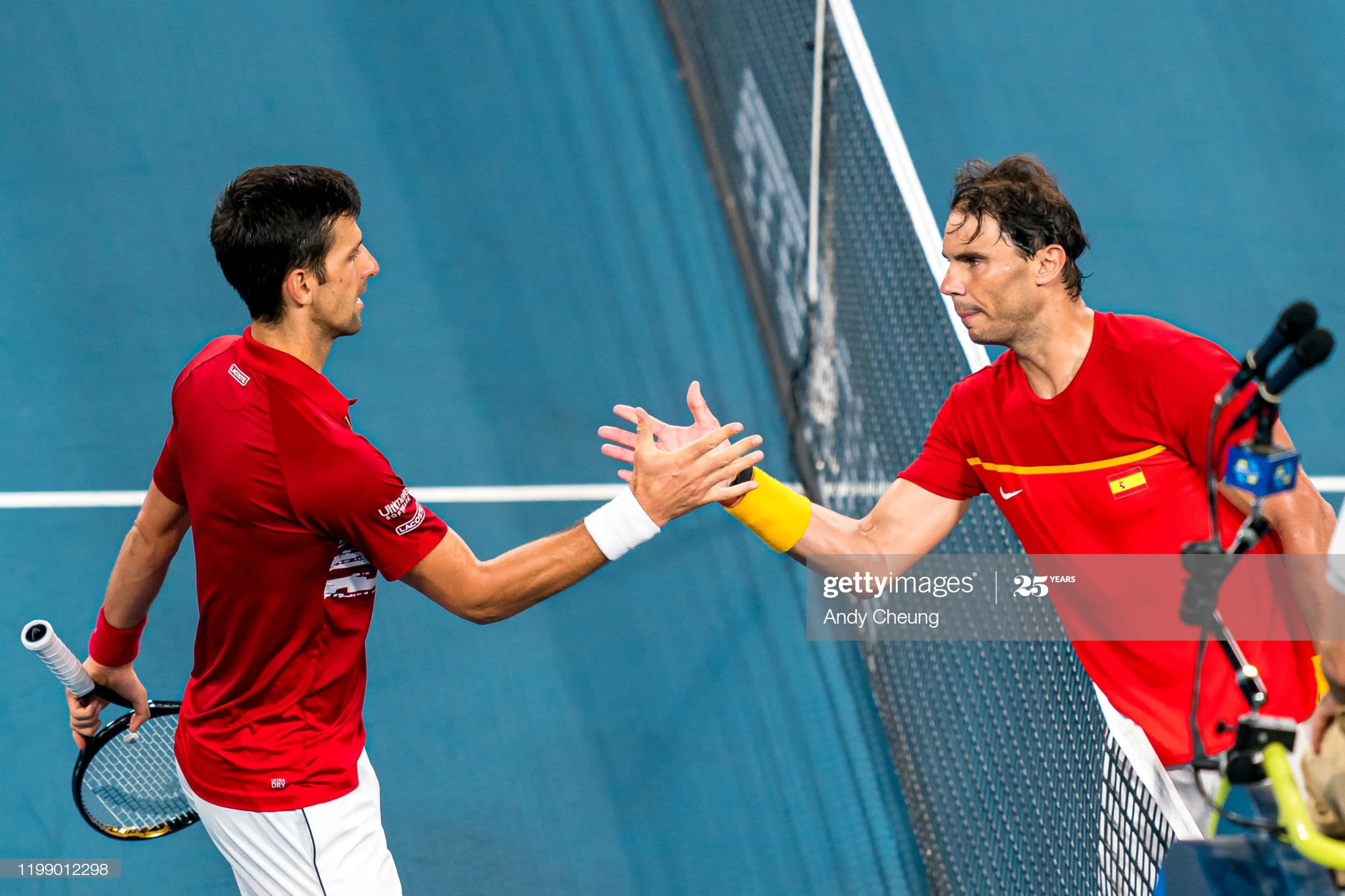
The Baseline investigates five of the biggest points of debate in tennis.
Part One of this series provides insight into the current state of team tennis events, after various recent changes and reforms.
This piece looks at whether the new competitions are good for tennis, and if further changes are required to improve the situation.
With the introduction of two new events and changes to the two major existing tournaments, the tennis team event landscape has transformed in the last three years.
The reforms, while widely seen as necessary, have led to disharmony between tennis’s governing bodies, and created further calendar congestion.
More issues exist on the men’s side due to there being three team competitions, including the Laver Cup exhibition – which occupies an important week in the calendar.
Much scrutiny currently centres on the similarity and close proximity of the other two men’s events.
Rafael Nadal’s Spain won the ITF’s newly-reformed Davis Cup Finals in November, before Novak Djokovic’s Serbia claimed the inaugural ATP Cup title just six weeks later in January.
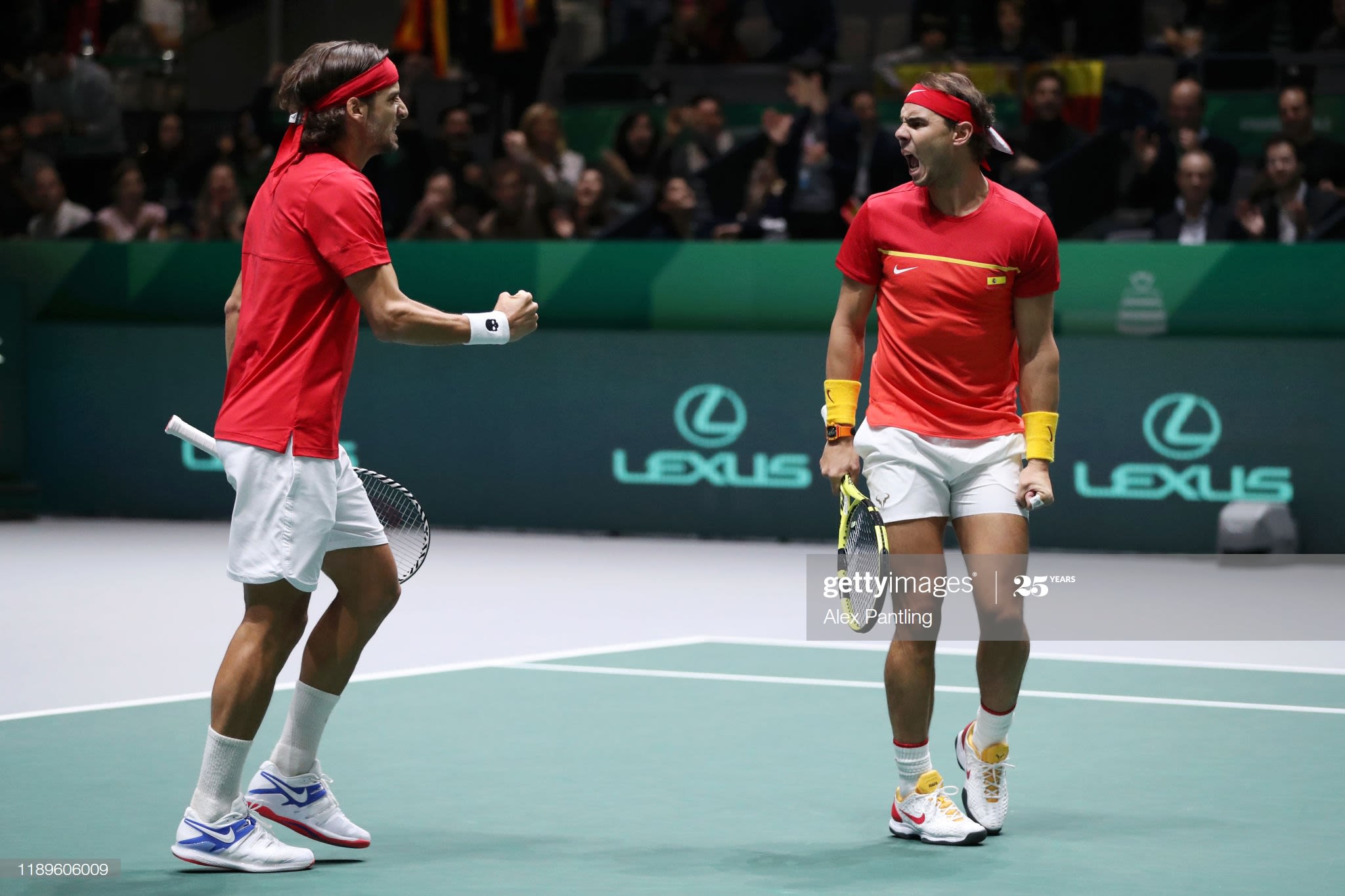
Rafael Nadal (R) and Feliciano Lopez (L) celebrate during their victory against Jamie Murray and Neal Skupski of Great Britain in the semi-finals of the 2019 Davis Cup Finals at La Caja Magica in Madrid, Spain. (Photo by Alex Pantling/Getty Images)
Rafael Nadal (R) and Feliciano Lopez (L) celebrate during their victory against Jamie Murray and Neal Skupski of Great Britain in the semi-finals of the 2019 Davis Cup Finals at La Caja Magica in Madrid, Spain. (Photo by Alex Pantling/Getty Images)
Many within tennis – including Nadal and Djokovic – have argued there is no room for both tournaments in the calendar. FC Barcelona’s Gerard Pique – president of Davis Cup investors and partners, Kosmos – shares this view.
Ben Rothenberg, tennis writer for The New York Times, says: “Both present themselves as World Cups or world championships, and they each devalue and confuse the other considerably.
“I'd like to see ATP Cup turn into being a combined event between men and women the way that Hopman Cup was, though keep the spread across three cities around Australia.
“ATP Cup is too similar to Davis Cup - and without any of the heritage - to justify needing to stick it out.
“Of course, this would mean governing bodies cooperating and men accepting women into the fold, which are not things that happen easily in tennis.”
Rob Koenig, ATP tennis commentator and former player, is more impressed with the Tennis Australia-partnered ATP Cup.
“I thought ATP Cup was unreal. It didn’t drag on. There is no doubt in my mind that the punchier the format, the better it is for tennis.
“Myself and other commentators weren’t talking about it as a warm-up for the Australian Open, and I think it’s testimony that the players were completely engaged in the event. None of them were saying that.
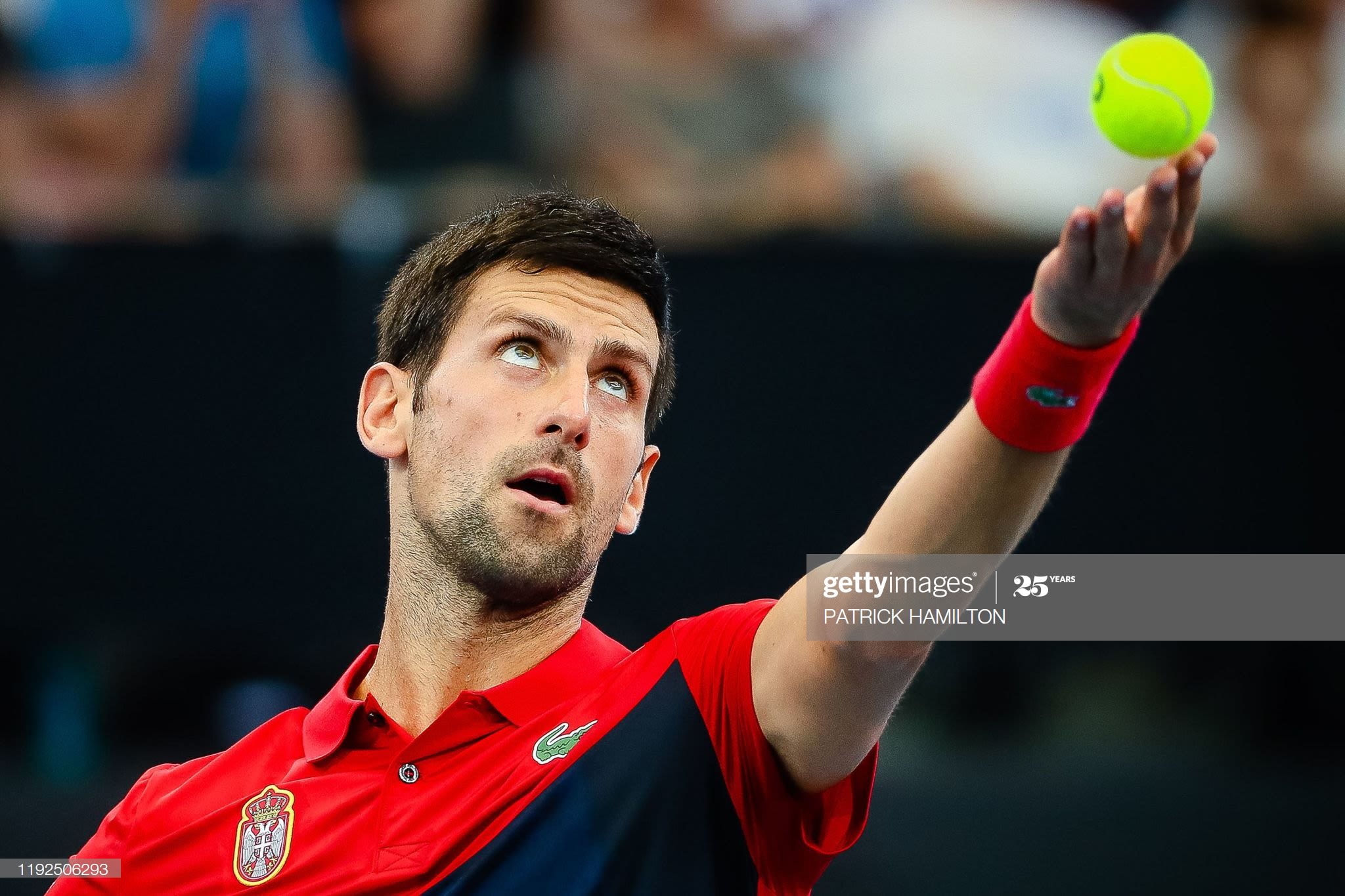
Novak Djokovic of Serbia serves against Cristian Garin of Chile on Day Six of the ATP Cup 2020 in Brisbane, Australia. (Photo by Patrick Hamilton/Getty Images)
Novak Djokovic of Serbia serves against Cristian Garin of Chile on Day Six of the ATP Cup 2020 in Brisbane, Australia. (Photo by Patrick Hamilton/Getty Images)
“The only complaint that the players had was – those playing in it get a 19th tournament, whereas everybody else on the tour doesn’t. Somebody coming from a strong tennis nation who is the number three singles player doesn’t get to play, versus somebody from Moldova, who is the number two player and is ranked 400 in the world, does get to play and earn points.”
Koenig adds: “I’d go for one or the other (Davis Cup Finals or ATP Cup). The ATP Cup has a better place in the calendar. At the beginning of the year, players are much fresher, versus at the tail end - when so many are jaded.
“I get the feeling the ITF is very political. They don’t love tennis as much as Tennis Australia does - that’s just a personal opinion of mine.”
The Fed Cup - the only major women’s team competition – has undergone a similar recent reform to its counterpart - the Davis Cup.
Jakob Haugerud, tennis analyst for Sportskeeda, believes the changes to both events were needed.
“The changes to the formats are unquestionably a good thing. Previously, when the Davis Cup and the Fed Cup were strewn across the entire tennis calendar, the majority of rounds got lost between the cracks of bigger tournaments.
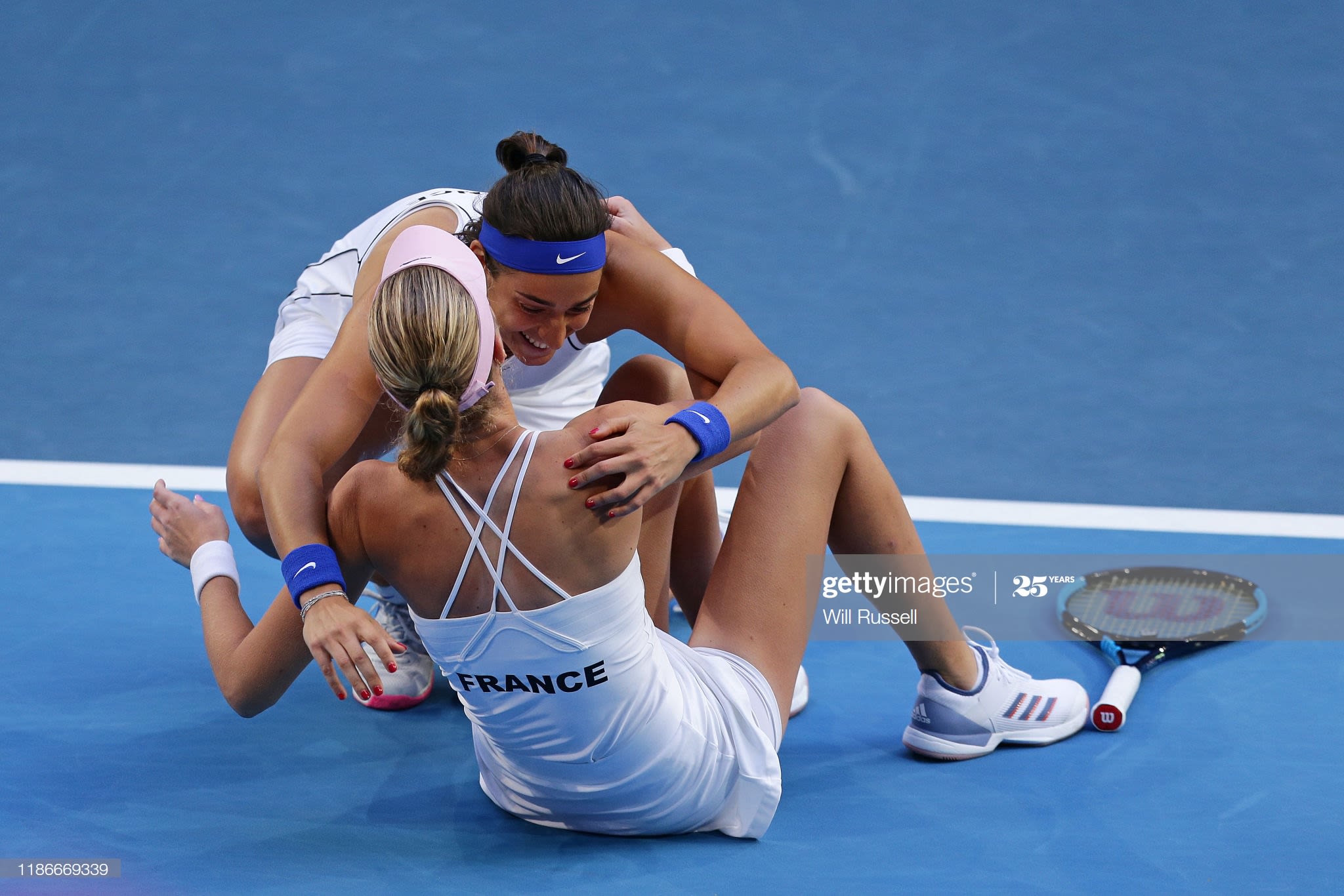
Caroline Garcia (top) and Kristina Mladenovic (bottom) of France embrace after winning the decisive doubles rubber in the 2019 Fed Cup final against Australia in Perth - the last Fed Cup edition in its previous format. (Photo by Will Russell/Getty Images)
Caroline Garcia (top) and Kristina Mladenovic (bottom) of France embrace after winning the decisive doubles rubber in the 2019 Fed Cup final against Australia in Perth - the last Fed Cup edition in its previous format. (Photo by Will Russell/Getty Images)
“The players wanted to play the big singles tournaments instead of the Davis Cup, for example, which resulted in fans largely ignoring the team tournaments. In my view, the new tournament formats have addressed this issue correctly.”
Haugerud believes problems with team competitions are mainly on the men’s tour, and offers an answer to the ATP Cup and Davis Cup dilemma.
“The primary downside to the current situation in team tennis exists within the ATP. Due to there being three separate team tournaments, all of which occur fairly close to one another, the tour has become saturated.
“The tennis calendar is relentless and offers very little time for recovery if a player wishes to maintain or improve their ranking. The obvious solution to this is by merging the ATP Cup and the Davis Cup.”
With the ATP Cup being entirely new, and the Davis Cup being played in its revised format for the first time, neither tournament was expected to be perfect. Both experienced timing issues - with some ties finishing well after midnight local time.
Ros Satar, tennis journalist, says: “The Davis Cup Finals were at times chaotic and the running and finish times were a mess. The ATP Cup experienced the same issues with timings.”
The third ATP team event Haugerud alludes to is Roger Federer’s invention, the Laver Cup – which is intended to be the Ryder Cup of tennis. The three-day exhibition - named after legendary player Rod Laver - was first held in 2017, and has ATP backing.
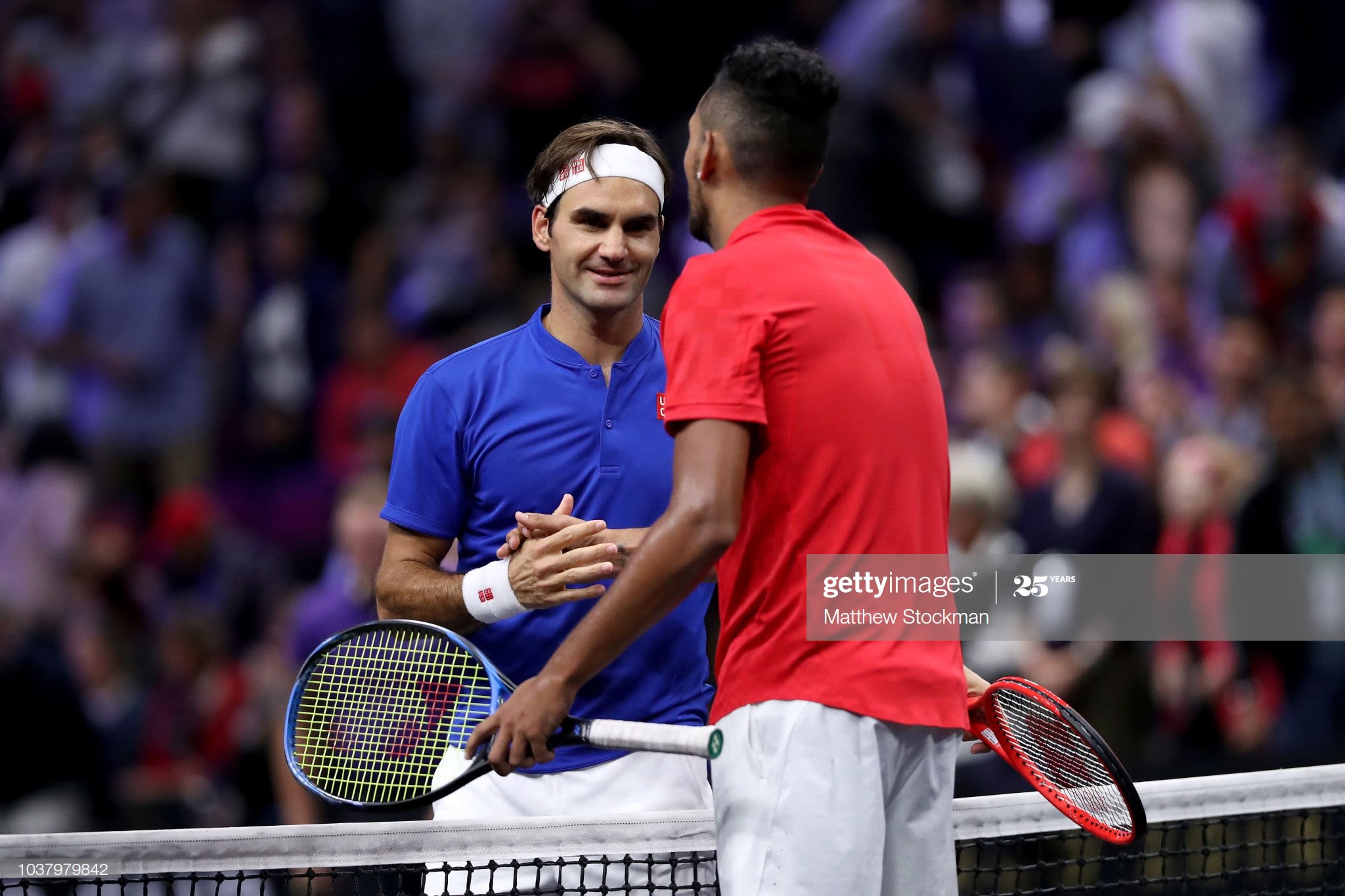
Team Europe's Roger Federer (L) shakes hands with Team World's Nick Kyrgios (R) after beating him on Day Two of the 2018 Laver Cup in Chicago, United States. (Photo by Matthew Stockman/Getty Images)
Team Europe's Roger Federer (L) shakes hands with Team World's Nick Kyrgios (R) after beating him on Day Two of the 2018 Laver Cup in Chicago, United States. (Photo by Matthew Stockman/Getty Images)
Team Europe's Rafael Nadal and Stefanos Tsitsipas have a funny exchange about hand signals during their doubles match at the 2019 Laver Cup in Geneva, Switzerland. (Video by ATP Tour)
Rothenberg says: “Laver Cup is the one that impressed me most with its innovations, particularly the way matches count for more each day to increase intrigue, and the way that they built it for viral moments with mic'd players and the bench areas near the court.
“They got fans to buy into a made-up concept pretty quickly. For example, with fans in Chicago vigorously rooting for ‘Team World’.”
Satar, though, believes Laver Cup should move outside the regular season to make its current September slot available for the main team events.
“Laver Cup is an exhibition, nothing more, nothing less. The calendars are already congested and with Laver Cup occupying the spot that should be for the tours, the whole thing will remain a mess until the organising bodies actually sit and discuss as a whole.
“With at least six controlling interest groups - Tennis Australia, ATP, Team8, WTA, ITF, and Kosmos - to placate, there will not be an easy fix and one group - most likely ITF - will find itself struggling with just their influence on Olympic selection to keep them in the game.”
